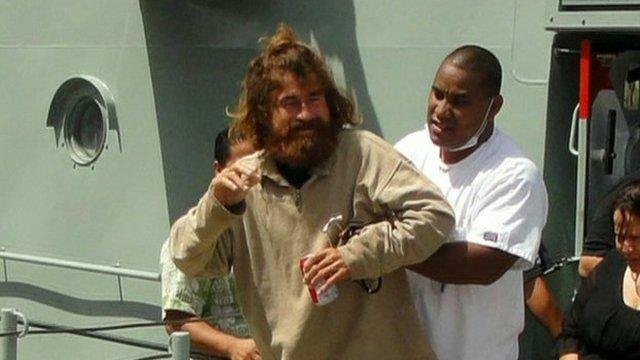Incredible stories of survival at sea
- Published

Mathew Bryce was found 13 miles from the Scottish shore
A surfer who was recently rescued by helicopter off the coast of Britain after spending 32 hours at sea is the latest in a long series of maritime survival stories.
Matthew Bryce, 22, was described as being "extremely lucky" to have stayed alive for so long in such cold water.
But how does his achievement compare with other stories of survival at sea?

Jose Salvador Alvarenga - '13 months'
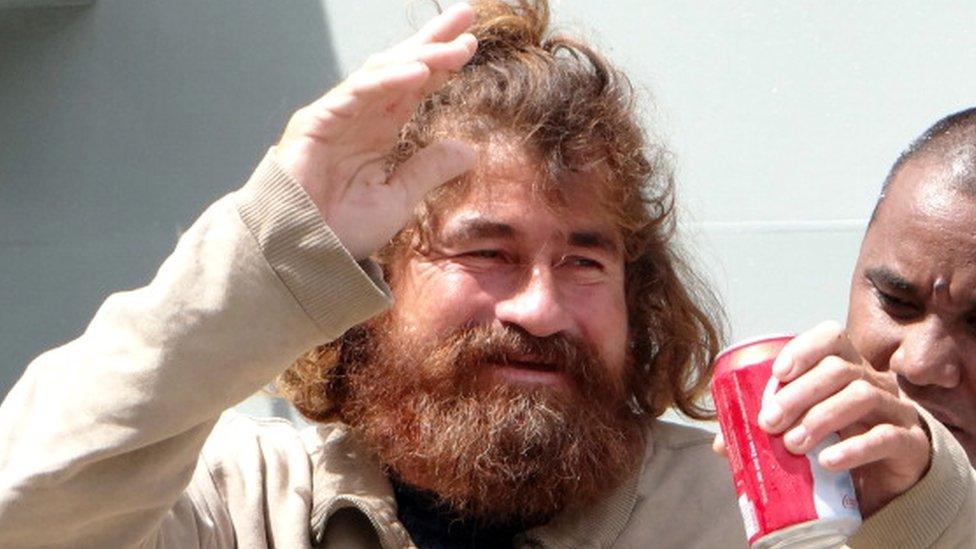
In January 2014 Mr Alvarenga was rescued by people living in the Marshall Islands in the Pacific Ocean, suffering from severe dehydration, back pain and swollen joints.
He said he had survived more than a year at sea, covering an area of 8,000km (5,000 miles) in a fibreglass boat by catching fish, birds and turtles with his bare hands.
His ordeal apparently began when he left Mexico for a fishing trip in December 2012 and was hit by a storm, which sent him off course.
An accompanying fisherman, Ezequiel Cordoba, died while they were stranded at sea.
Mr Alvarenga said that he stayed alive by drinking urine, rainwater and the blood of birds. However in 2015 he denied claims in a lawsuit filed by Mr Alvarenga's family that he committed cannibalism by eating his crewmate to stay alive.
Read more: How do you survive 66 days lost at sea?

Jesus Eduardo Vidana, Lucio Rendon and Salvador Ordonez - 'Nine months'
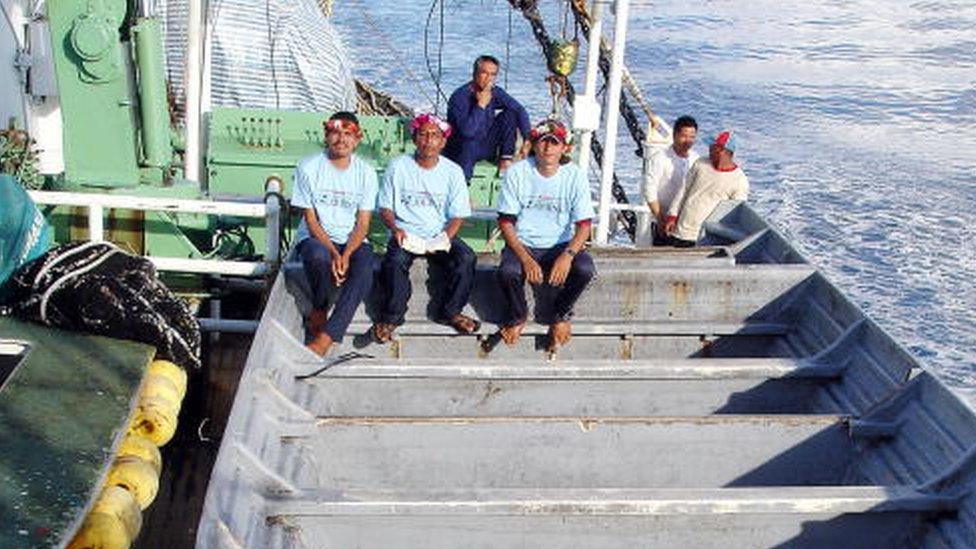
Jesus Eduardo Vidana, Lucio Rendon and Salvador Ordonez were found, emaciated, by a Taiwanese fishing vessel on 9 August 2006, external in south Pacific waters.
The three men said they set out on a shark-fishing expedition from the Mexican Port of San Blas - some 8,000km (5,000 miles) away - the previous October.
The said their 8m (27ft) boat had been caught by strong winds and dragged out to sea. They later ran out of fuel and were left at the mercy of the currents, surviving on raw fish, birds and rainwater.
The trio said that two other crew members died because they were not able to stomach the diet, and their bodies were thrown into the sea. They denied allegations from some people that they may have been trafficking drugs or had resorted to cannibalism.
When asked why they seemed to be in such good health after such an ordeal, they replied that the tuna fishermen who had rescued them had treated them very well.

Lapahele Sopi and Telea Paa - 'Four months'
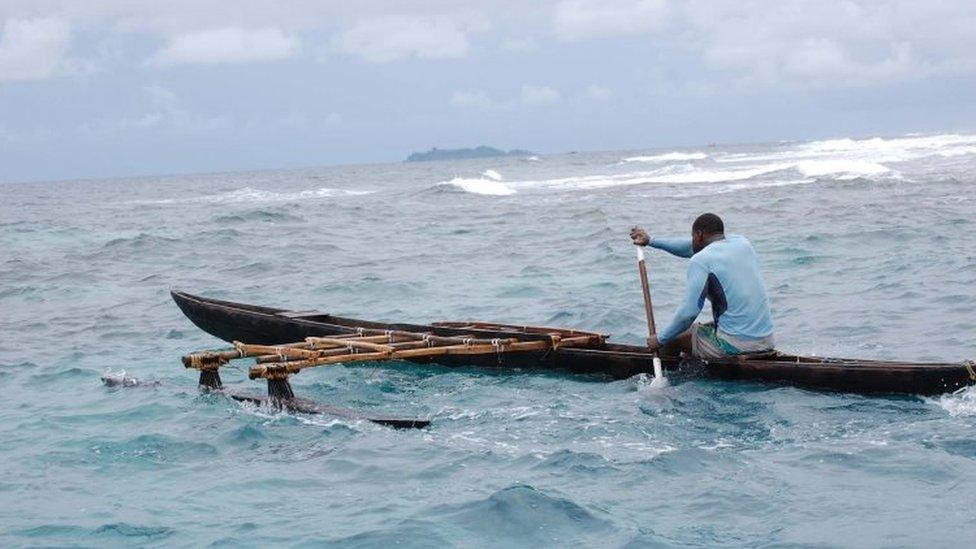
Lapahele Sopi and Telea Paa were rescued by a canoe - similar to this - off the coast of New Guinea
Lapahele Sopi and Telea Paa from Samoa in the South Pacific survived for four months adrift at sea in a small metal boat.
The pair were rescued in 2001 in Papua New Guinea - 4,000km from their homes.
A local doctor treating the two survivors said it was a miracle that they survived. Two other men died of thirst and starvation during the ordeal.
Mr Sopi, 36 at the time, told local media they survived by eating fish and drinking rainwater. Mr Sopi and Mr Paa, were rescued by a villager in Milne Bay, Papua New Guinea, who paddled his canoe out to them after they had fired off their last flare.

Other well known survivors
Poon Lim was stranded at sea on a raft for 133 days on the Atlantic after his ship was torpedoed by a U-boat in during World War Two, eventually being rescued off the coast of Brazil
Maurice and Marilyn Bailey spent 117 days adrift in the Pacific in a rubber dinghy after their yacht capsized by a whale off the coast of Guatemala in 1973
Deborah Kiley and a crew member survived five days on a life raft off the US coast in 1982 - without food or water - after their boat was hit by a storm. Two of the five crew members with them on the raft drank salt water, became delusional and were eaten by sharks. A third died from wounds sustained during the sinking. Ms Kiley's story was made into the film Two Came Back
Captain Oguri Jukichi spent the longest period adrift at sea - along with one of his sailors - between 1813 and 1815, according to Guinness World Records., external It says the two Japanese men survived about 484 days after their ship was damaged in a storm off the Japanese coast. They drifted in the Pacific before being rescued off California on 24 March 1815. While 12 crew members died of vitamin deficiency, the pair survived by eating from hundreds of bags of soy beans
Scottish sailor Dougal Robertson survived for 38 days with five others in a small dinghy in the Pacific Ocean in 1972, after their schooner was holed and sunk by killer whales west of the Galapagos Islands
US adventurer Steven Callahan survived 76 days in a life raft in the Atlantic in 1982 after a whale rammed into the hull of his vessel. He described his adventure in the best-selling book Adrift: 76 Days Lost At Sea (1986) and gave advice in the making of the film Life of Pi
- Published2 May 2017

- Published2 May 2017

- Published23 February 2017
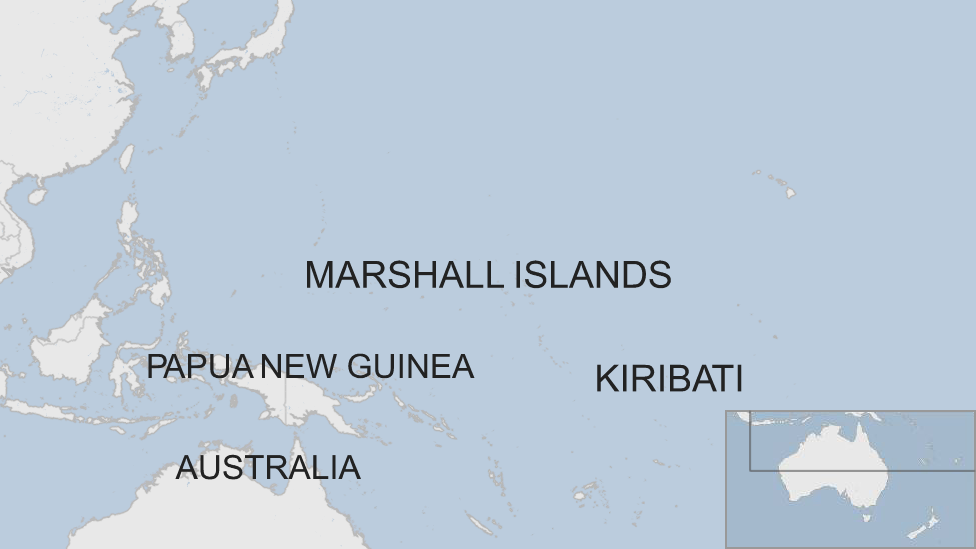
- Published4 January 2017
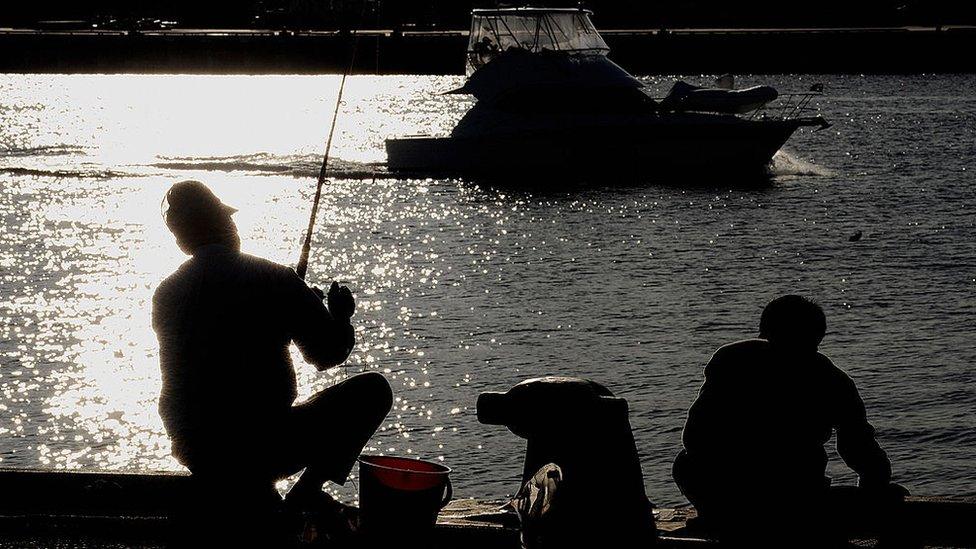
- Published14 October 2016

- Published4 April 2015

- Published5 February 2014
